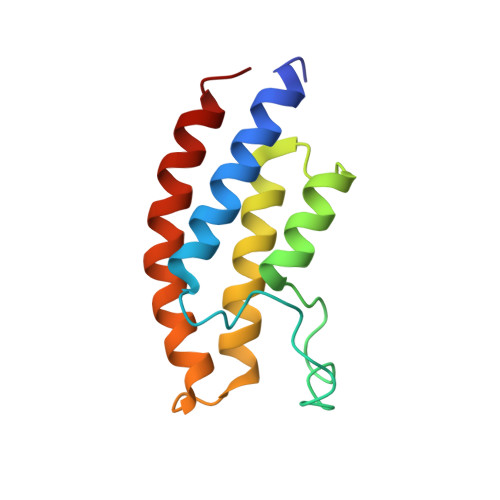Design of a Chemical Probe for the Bromodomain and Plant Homeodomain Finger-Containing (BRPF) Family of Proteins.
Igoe, N., Bayle, E.D., Tallant, C., Fedorov, O., Meier, J.C., Savitsky, P., Rogers, C., Morias, Y., Scholze, S., Boyd, H., Cunoosamy, D., Andrews, D.M., Cheasty, A., Brennan, P.E., Muller, S., Knapp, S., Fish, P.V.(2017) J Med Chem 60: 6998-7011
- PubMed: 28714688
- DOI: https://doi.org/10.1021/acs.jmedchem.7b00611
- Primary Citation of Related Structures:
5MYG - PubMed Abstract:
The bromodomain and plant homeodomain finger-containing (BRPF) family are scaffolding proteins important for the recruitment of histone acetyltransferases of the MYST family to chromatin. Here, we describe NI-57 (16) as new pan-BRPF chemical probe of the bromodomain (BRD) of the BRPFs. Inhibitor 16 preferentially bound the BRD of BRPF1 and BRPF2 over BRPF3, whereas binding to BRD9 was weaker. Compound 16 has excellent selectivity over nonclass IV BRD proteins. Target engagement of BRPF1B and BRPF2 with 16 was demonstrated in nanoBRET and FRAP assays. The binding of 16 to BRPF1B was rationalized through an X-ray cocrystal structure determination, which showed a flipped binding orientation when compared to previous structures. We report studies that show 16 has functional activity in cellular assays by modulation of the phenotype at low micromolar concentrations in both cancer and inflammatory models. Pharmacokinetic data for 16 was generated in mouse with single dose administration showing favorable oral bioavailability.
Organizational Affiliation:
UCL School of Pharmacy, University College London , 29/39 Brunswick Square, London WC1N 1AX, U.K.















